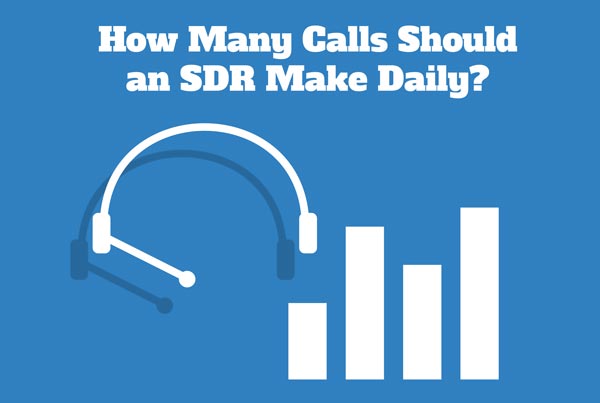
How do you determine the optimal number of sales calls your representatives should make?
This number is an important, sought after metric to sales managers and representatives who want to gauge what it takes to be successful.
The question is, how do you come up with a number that’s truly useful? Is there an optimal number? I want to explain why that “magic number” of calls per day is subject to many factors that are specific to your company, your company’s sales culture, and your company’s sales technology.
The number of calls you need depends on their quality. I believe this perspective can help you arrive at a “magic number” that is based solidly in the reality of your specific sales environment, and not just an arbitrary number you pull out of a hat like the magician with the rabbit!
What Factors Can Affect Your Ideal Number?
Consider each of the categories below as factors that affect the number
of calls per day that your SDRs can make.
- The list of contacts – who determines the list of prospects that the SDR should call? And what information does the SDR get about this prospect besides contact information?
- Outbound prospecting guidance – what details are documented about making calls? Is the call guidance script known to work well?
- Number of Meetings – how much time is the SDR expected to spend attending meetings? Is the balance of time considered?
- Training – What is the quality of training, and how much time does the SDR allocate to training?
- Available resources – What resources can the SDR access, and is this support enough?
- Time spent with sales counterparts – Inside sales representatives can learn from others who contact the prospect – how good is this communication and how much is available?
Your organization’s answers to these questions will be unique to your setting. The important thing is to recognize their impact on the quality of each phone call your representatives make.
For example, even the most determined and hard-working SDR who makes 100 calls a day may be uncovering too few real opportunities.
Some Real-Life Examples
100 Calls Per Day
In a real-life case, I had the opportunity to work with a tenacious and disciplined person who made 100 calls per day. In this case the leads passed to Sales were not considered quality leads by the receiving representatives.
The level of effort is not at fault. Rather, the process did not entail having a meaningful conversation or connecting with the right contact.
Some of the problems were that these calls:
- Addressed non-C-level executives
- Consisted of a non-compelling opening
- Included minimal to no research
- Included poor qualifying questions
- Lacked lead definition and understanding
- Failed to uncover the prospect’s business challenges
- Mistook the response of “call me back in a few weeks/months” for interest
- Failed to engage with prospects in a business conversation
- Were poorly controlled
- Were quick calls
50 calls Per day
I worked with another group of SDRs, each who made 50 calls per day.
These representatives were more relaxed, and this enabled them to be more themselves and less tense while on the clock. They also had the time to do a bit of research on each contact and account. With that said, they were able to have more conversations and – quite frankly – to have more meaningful engagements with prospects and clients.
This led to a great quality of leads that were accepted by the sales representatives.
30 Calls Per Day
What happens in an organization that tasks SDRs to call on accounts they know very little about? What if these representatives have been trained in a procedure to research their prospects using LInkedIn, annual reports, press releases, and other information about their contacts before calling them?
It is possible to generate high quality leads even if call volume is low. Is this the right number for your team?
Other factors you will need to evaluate include:
- How you use call automation technology
- How easily you can access your pre-call research when you connect with a contact
- How you leave voicemails or recorded messages to make your calls “warm” to prospects
As you can see, there are many factors that determine the number and quality of calls an SDR can perform in a stated period of time.
To help you identify the most important factors for your organization, see our free guide, The Ideal Number of Sales Calls: How Many Calls Should a Sales Development Representative Make Daily?
This article is just a sample of the full content — get instant access to this free ebook in our Resources section.

